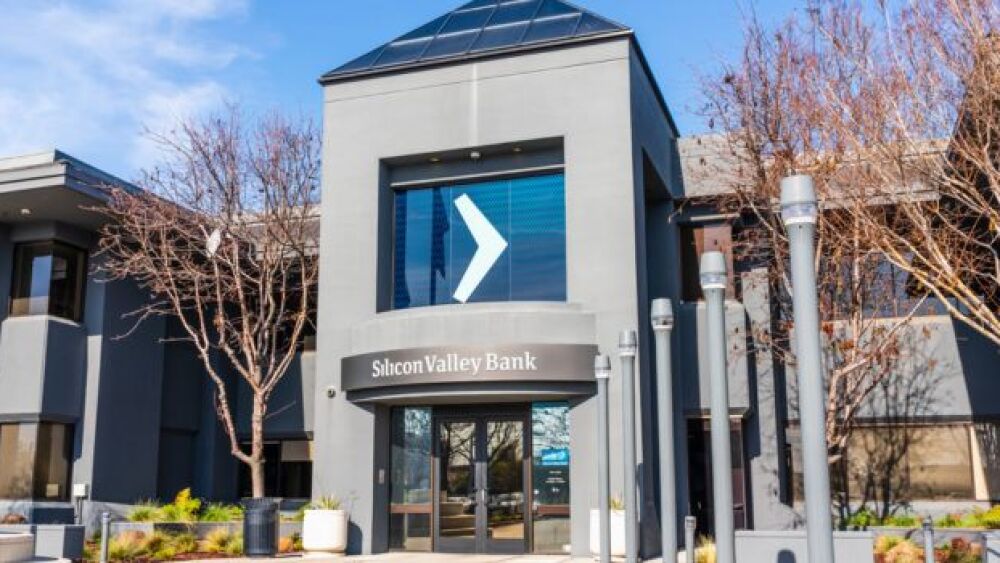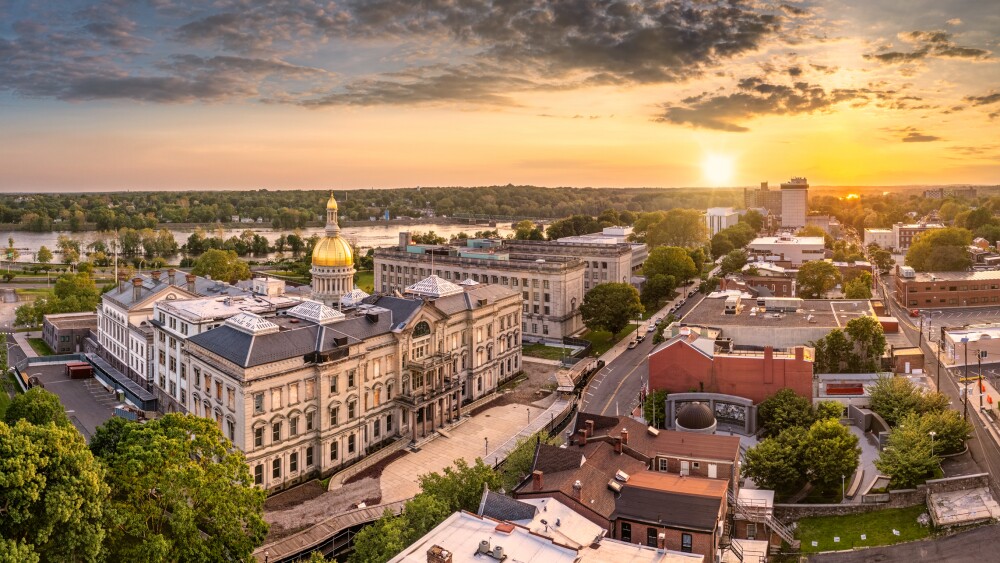Silicon Valley Bank was one of the primary lending institutions for biotech. A year after its demise, the industry has recovered, but lessons have been learned and scars remain.
Pictured: Exterior of Silicon Valley Bank’s headquarters in Santa Clara, CA iStock/Sundry Photography
In mid-March 2023, Paul Hastings, CEO of cell therapy biotech Nkarta, was seeing news reports of Silicon Valley Bank’s initial troubles and thought it was “weird.” Then it got serious.
Hastings soon received a phone call from Nadir Mahmood, the company’s head of finance at the time. Mahmood said he was not sure how they were going to make payroll on Monday, Hastings recalled in an interview with BioSpace. Hastings said the company was then in the process of transferring money to a different bank, and in the end, the situation was ironed out, “but it was very disruptive for the rest of us for a short period of time.”
That initial shock gave rise to funding concerns, Hastings added. “Silicon Valley Bank was the cornerstone of a lot of our banking activities in our industry—not just biotech, but also tech in Silicon Valley—so it was a little bit hard to accept and swallow that somebody had made the mistakes they had made,” Hastings said. “But they did, and they paid the consequence for it.”
According to a Reuters report from a year ago, 50% of early-stage biotechs banked with SVB. Today, experts told BioSpace, biotech companies have learned from the shocking event to diversify their funds and protect against the downfall of any single institution.
What Caused Silicon Valley Bank to Collapse?
On March 8, 2023, SVB announced in a mid-quarter update that it was undertaking an underwritten public offering to raise around $2.25 billion. But with a perfect storm of rising interest rates, which reduced the value of long-term bonds the bank held, and a reduction of venture capital deposits, it was facing losses. Once SVB announced that it had sold securities at a loss, panic ensued, leading companies that banked with SVB to withdraw their accounts. This snowballed into a run on the bank.
“Silicon Valley Bank bought a bunch of bonds,” said Steve Wasserman, a consulting part-time CFO and senior lecturer at Bentley University. “When interest rates went up, they ended up losing money.”
SVB had been a significant player in the Bay Area entrepreneurial environment, especially in biotech and the general technology sectors. “[SVB] was very concentrated in a few segments: life sciences and technology,” Wasserman said. “They weren’t very well diversified.”
This did not bode well for SVB when things started to falter, explained George Morgan, a professor of finance at Virginia Tech. “The community that they were serving was pretty tight-knit,” he said. “When a couple of people started to get suspicious about the health of the portfolio, they spread that suspicion around pretty quickly to other community members, and that’s sort of what . . . triggered the run.”
Graig Suvannavejh, managing director of equity research at Mizuho Securities, told BioSpace that when the SVB news was breaking, the question was which biotech companies would keep their money in the bank and which would not. “At least that was the initial fear, in the moment, call it a fog of war,” Suvannavejh said.
But as quickly as the chaos came, things began to settle down. Analysts told CNN that the collapse of one prominent bank would not have a cascading effect on the broader U.S. economy. Suvannavejh’s own analyst reports from last year noted that the companies he analyzed were minimally affected, and most companies that had banked with SVB had minimal to no exposure.
Picking Up the Pieces
For investment banks that work in the life sciences industry, SVB’s loss was their gain. First Citizens Bank swiftly acquired SVB, while large banking institutions such as HSBC and JP Morgan Chase bought some of SVB’s assets.
Katherine Andersen, a former SVB executive and now the head of life science and healthcare at HSBC USA commercial banking, noted that HSBC had a “strong desire” to lean into the innovation industry and build off of the assets acquired from SVB. The bank acquired SVB’s U.K. branch in March 2023, giving it a solid foundation, Andersen said, and late last year, HSBC launched a debt program and closed more than 35 deals in the life sciences and healthcare. “We’ve been far more successful than I think I had anticipated,” Andersen said.
Wasserman said that while other banks may have won in this situation, he doesn’t think there were any overall winners in the crisis. Hastings reiterated this sentiment. “Anytime something like that happens, everybody loses,” he said.
To guard against future similar incidents, Hastings said that Nkarta and its peers have improved their own cash management. “They’ve adapted to this new environment, and they’re—if they had put all their eggs in one basket in the past—probably not doing that anymore,” he said. Wasserman, Morgan and Suvannavejh all agreed that having money in different banks would dilute the risk.
The biotech sector is now seeing its financial climate rebound, with more companies going public and with mergers and acquisitions also picking up steam. This should shield investment banks from the risk of the run that put SVB in the ground, Hastings said.
“At the time, we were in a very tough financing environment . . . and we all needed to spend our cash on our pipelines,” he explained. “Now the environment is financings are back, and so the fund flow through the banks [is] more natural now than [it was] back then.”
Tyler Patchen is a staff writer at BioSpace. You can reach him at tyler.patchen@biospace.com. Follow him on LinkedIn.






